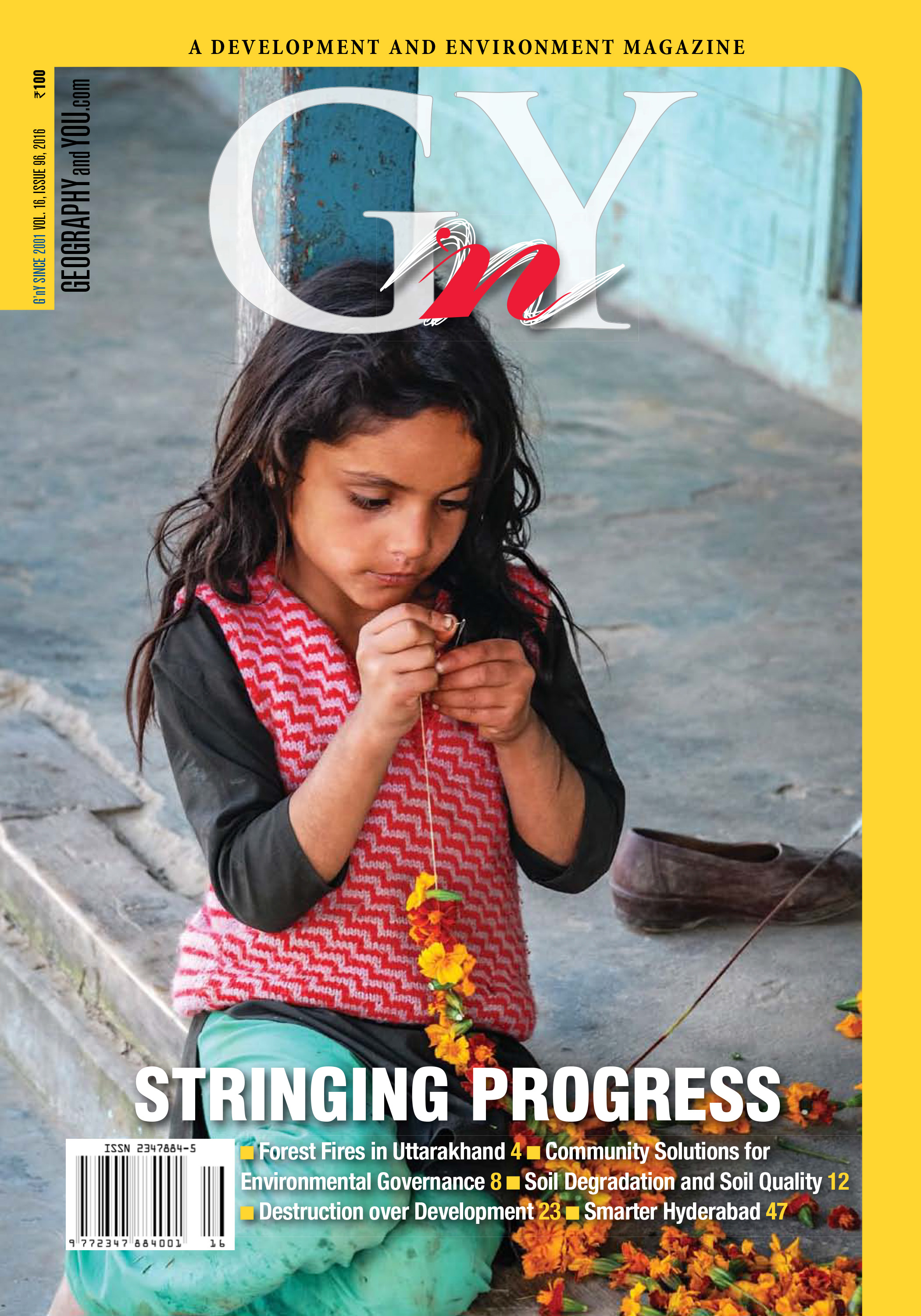
Expert Panel

Vice Chancellor, MG Kashi Vidyapeeth, Varanasi

Chairman, National Biodiversity Authority, Chennai

Air Vice Marshal (Retd) Former DG, IMD, New Delhi

Former Member Secretary, Central Pollution Control Board, New Delhi

Former Director, NCAOR, Goa

Professor, CSRD, Jawaharlal Nehru University, New Delhi

Professor, CSRD, Jawaharlal Nehru University, New Delhi

Director, Economic Research, Nielsen, New Delhi
Inside this issue
Disaster
Forest fires in Uttarakhand are a result of warped policies since British times that wrested control of the forests from local communities, who in turn, set forests on fire to extract their revenge. Corrective measures to turn these communities from foes into friends can definitely help protect the unique Himalayan ecosystem.
Climate Change
Environmental governance is often led by governmental top down, expert-led solutions for local problems. Community owned solutions that can help communities plan governance and management of land and resource systems may be an effective alternative.
Soil erosion is a gradual process that depletes soil organic carbon, adversely affecting soil quality. It is the primary cause behind 78.6 per cent of the total degraded land in India. Enhancing soil organic carbon in soils may prove the most effective method to maintain soil quality.
Methane, which is mostly generated out of solid waste, is one of the major greenhouse gases contributing to global warming. If methane from solid waste is utilised as a source of energy and fuel, it can become an effective alternative resource.
Economy
The economic situation and policies of the states has a direct bearing on economic welfare, and hence has significant impact on consumption demand. Although hitherto neglected, it can easily explain the fluctuations in consumption pattern for consumer and other goods, and help in the planning of business strategy.
Public hearing is an important step in the environmental clearance of any developmental project. For Sarguja Thermal Power Plant, attached to a coal mining block, the hearing was postponed despite community leaders pointing to non-compliance of several conditions of the environment impact assessment.
Mining has affected the locals, especially the tribals whose lives are intrinsically linked to the ecosystem of the areas. A holistic approach is imperative to bring justice and inclusive egalitarian distribution of resources amongst all. Locals, concerned parties and the government have to work together to ensure and balance development with environment.
Science
Studying stalagmites and their deposits can reveal the frequency and magnitude of dry and wet seasons in the past. Such studies can help predict climate uncertainties.
The western Himalayan region experienced an increasing trend of one-day heaviest precipitation, during both winter and monsoon through 1978 to 2007. While one day heaviest precipitation is on the rise in high-altitude stations during winter, the same is observed in low altitude stations during the monsoon.
Agriculture
Changing climate has impacted several traditional crops in India which have ecological, nutritional and economic benefits. There is an urgent need for technological and financial initiatives to prevent the ultimate disappearance of these crops.
Population Urbanisation
Hyderabad is a digitally advanced city and it has been in the forefront in using digitisation for managing its waste, traffic and revenue collection apart from overall infrastructural progress. However, the city is yet to overcome the constraints of geographical extent to become the next ‘smart city’.
Urban wetlands are perishing everywhere. Apart from the unplanned growth affecting these ecosystems, planned removal of wetlands has often been part of the government agenda, often for public benefit, with scant ecological concerns. Increased awareness of wetland benefits is the only way out if our wetlands are to be saved for posterity.
India is one of the 25 fluorosis endemic countries worldwide. Consumption of water rich in fluoride, especially groundwater, and food with high fluoride content needs to be checked to curb fluorosis.
India Outdoors
India’s only marine park recognised by International Union for Conservation of Nature, is inhabited by varieties of water species and is an enthralling experience. Unfortunately, industrial activities and oil spill have affected the ecosystem and initiatives are needed to stop further degradation.
In brief
The culprit is man, on every count. The fires that even today rage through the green realms of the Himalaya have destroyed thousands of hectares of forest biodiversity—a devastation that will take a score or more decades to replenish. It may have been the dry winds precipitated by the El-nino that
